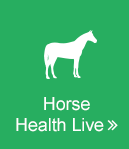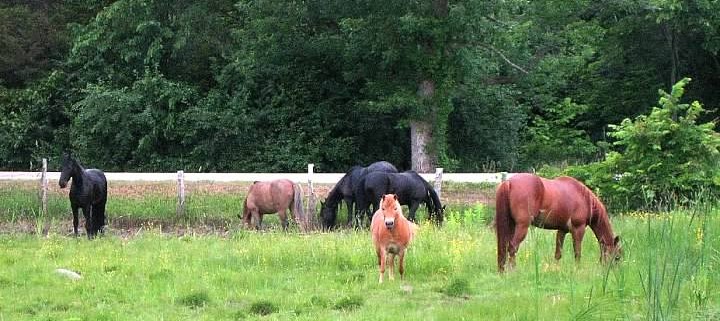Nutritional Deficiencies in Horses
One of the basic keys to helping your horse live a long, healthy life is to provide them with a good diet. Most people are not nutrition experts and leave the formulating up to the feed companies. Horse feed companies often claim that their formulas are either designed or recommended by veterinarians and many have animal nutritionists on staff. If you feed your horse a nutritionally complete commercial diet, are they getting everything they need?
What are the nutrients that my horse requires?
The basic nutritional categories required for survival:
Water
Protein
Fat
Carbohydrates
Vitamins
Minerals
Within these general categories are more specific nutrients including amino acids, fatty acids, and specific vitamins & minerals that truly are essential for wellness. If an animal’s diet is low on even one essential nutrient it can inhibit the animal’s body from effectively completing certain functions. Your horse may have subclinical deficiencies that you do not even know about! Long term deficiencies can take their toll because they train the body to live in crisis mode, making them extra sensitive to their environment and prone to developing allergies. Bigger deficiencies lead to more serious health concerns depending on which nutrient(s) is lacking.
Horses should get a multi-vitamin if they are fed only hay or hay in combination with a whole grain like oats. Even if your horse gets a complete feed, there are a lot cases when additional nutrients are needed.
Individuality
Commercial feed was formulated for the average horse. There are a lot of really cool new foods out there that target specific lifestyles, breeds, life stages and conditions, but each one is designed for the average animal in that category. Some horses genetically have higher needs for certain vitamins or minerals than others. Some diseases and medications can cause the body to metabolize certain nutrients faster than usual as well. Everyone’s body has their own internal chemistry & metabolism, is exposed to their own environment and has their own genetic make-up. We call that “biochemical individuality”, which is a fancy way of saying that we’re all unique!
Stability
Feed manufacturers achieve their desired nutrient levels by adding food ingredients (like grains and brans) and by adding vitamins & minerals. Regardless of the source of these nutrients, many materials are sensitive to outside factors such as oxygen in the air, sunlight, water and heat. While the initial recipe could be ideal, nutrients can degrade during the manufacturing process and shipping. Heat is especially concerning because many pellet manufacturing processes include heat. Shelf life is another important factor because the potency of nutrients will decrease over time.
Storage Conditions
Many barn owners have a routine where they pick up big bags of feed and dump them into a barrel with a lid for easy access. That dry food is not tightly sealed, plus it is opened daily when feeding the horses. Because we want to make sure that we are always well-stocked with grain, the pails are often refilled before the pellets at the bottom are completely gone, so who knows how long the food at the bottom of the pail had been sitting there? That is why it is important to keep feed stored in a cool, dry place and sealed up in an air tight container.
Availability
Just because a formula contains a vitamin or mineral that you know your horse needs does not mean that the nutrient is actually accessible by your animal’s body. Minerals are often culprits because not all forms of minerals are bioavailable. Whole food supplements for vitamins and minerals such as vegetable powders can be good options because the nutrients tend to be more easily assimilated by the body, but are not always as potent or stable as purified options. Always read the ingredient list so you know where the nutrients are coming from to ensure they are healthy sources!
Feeding Directions
Reading the feeding directions is the final bit of information needed to convert many equestrians to multi-vitamin users. In many cases the feed company suggests that you give much larger quantities of food than you really do because that is the amount of food needed to hit those ideal nutrient levels. Increasing their diet could lead to your horses all becoming grossly overweight and very unhealthy. Even when a food uses high quality, bioavailable ingredients horses can still be lacking the nutrients they need because they were not getting enough of them.
The easiest way to ensure that your horses’ nutritional needs are met is to give them a multi-vitamin or other nutritional supplement. If in doubt, always ask your vet! Your veterinarian will be able to assess your horse and all of his or her individual needs based on their age, breed, genetics and activity level to help you decide which food and supplements are right for them.
Studies
The selenium and vitamin E status of horses in Prince Edward Island.
Vitamin E deficiency and risk of equine motor neuron disease.
Chronically starved horses: Predicting survival, economic, and ethical considerations.
Vitamin A nutrition of the equine: growth, serum biochemistry and hematology.
An effect of vitamin B12 deficiency in tissue culture.
Vitamin D metabolism and rickets in domestic animals.
Diet and skin disease in dogs and cats.
Addressing nutritional gaps with multivitamin and mineral supplements.


